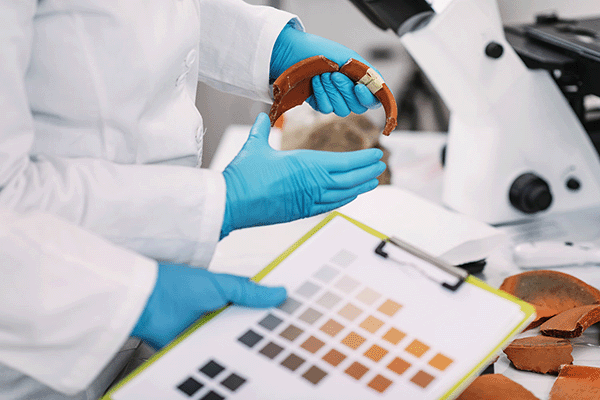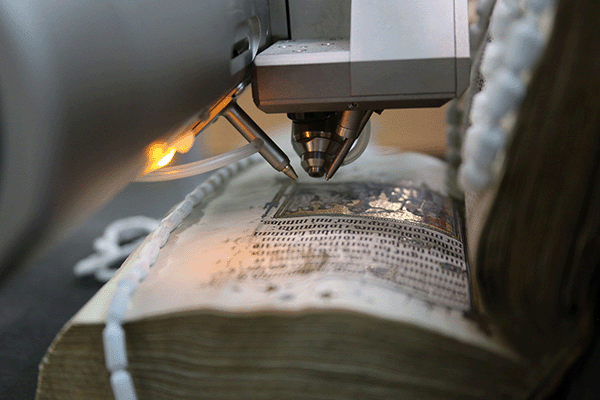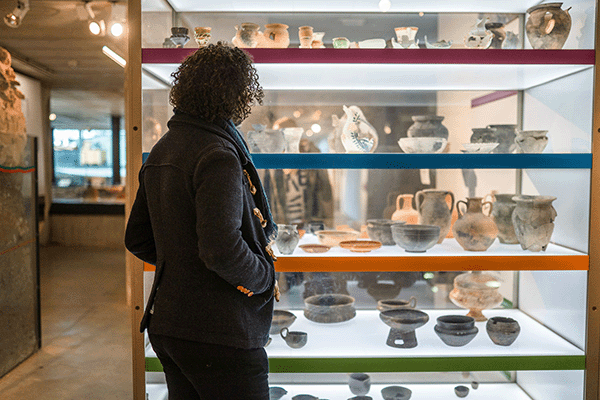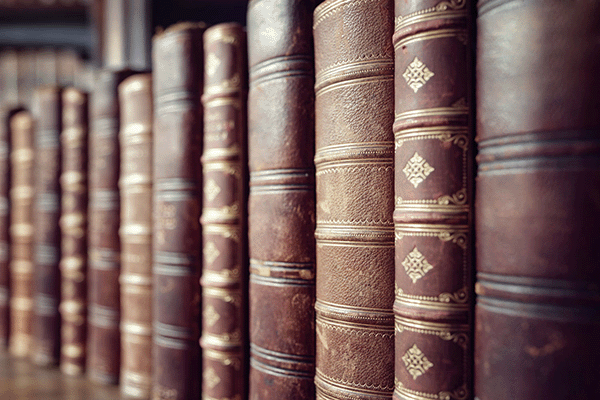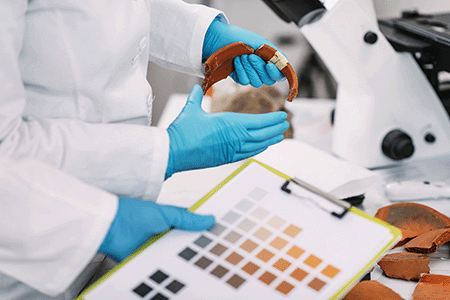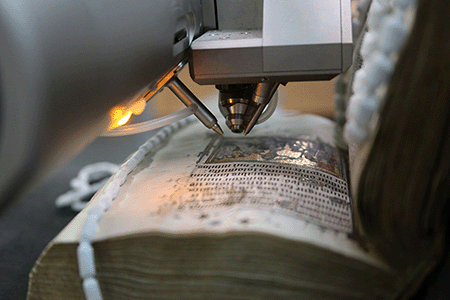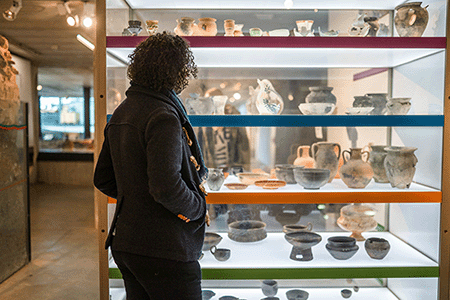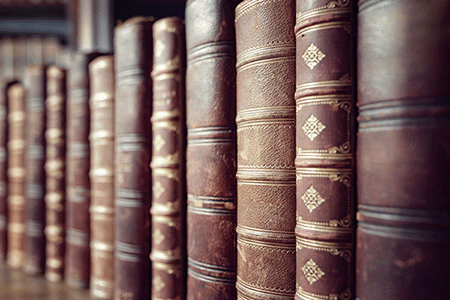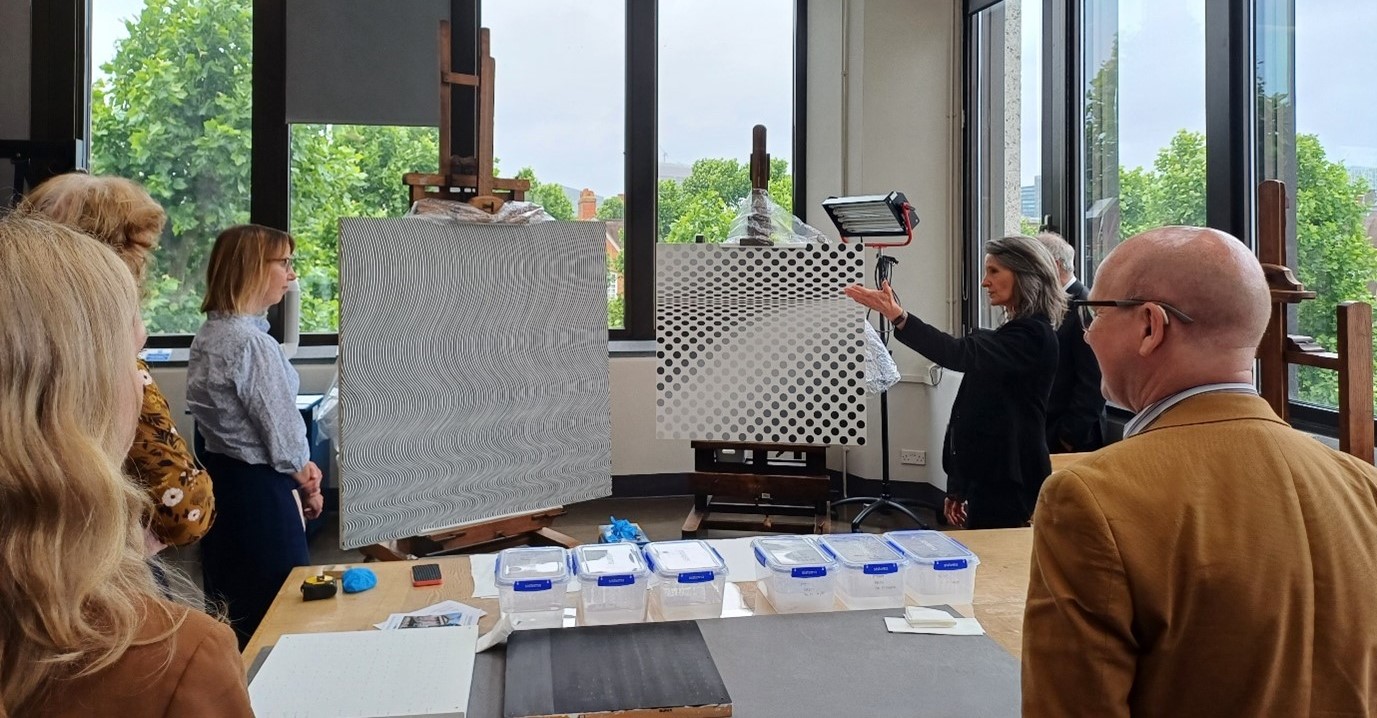Cover image © Bridget Riley, 2025
The RICHeS team recently visited Tate Britain to explore two interrelated RICHeS’ funded projects that are enhancing the Tate’s leadership in conservation and heritage science. These projects, Accessing Modern and Contemporary Art Materials Research, led by Dr Bronwyn Ormsby and Establishing Tate’s Conservation and Heritage Science Archive led by Louise Lawson, demonstrate how investment in capability and collections is helping deliver more innovative, sustainable, and accessible approaches to art conservation.
Two interconnected projects supporting a shared vision
Tate encompasses four galleries across the UK, Tate Modern, Tate Britain, Tate Liverpool, and Tate St Ives. They hold an extensive collection of historic as well as modern and contemporary artworks, as well as vital reference materials such as pigments, paint swatches and artist-specific media.
The two RICHeS projects at Tate Britain serve complementary purposes:
- Accessing Modern and Contemporary Art Materials Research is a facilities project that expands Tate’s capacity to undertake advanced scientific analysis by investing in new fixed and portable laboratory equipment and increasing access to materials and research expertise.
- Establishing Tate’s Conservation and Heritage Science Archive (CHSA) focuses on collections, consolidating decades of physical samples and digital heritage science data into a structured, and discoverable archive.
Together, these initiatives are enhancing the Tate’s ability to support researchers, conservators, and artists while opening new pathways for collaborative work across the UK’s heritage sector.
Investing in scientific capability and expertise
During the visit, the RICHeS team were joined by colleagues from the Heritage Science Data Service and members of the RICHeS Programme board, who all toured the Tate’s painting conservation studio and newly refurbished science laboratories and discovered its growing reference paint collection.
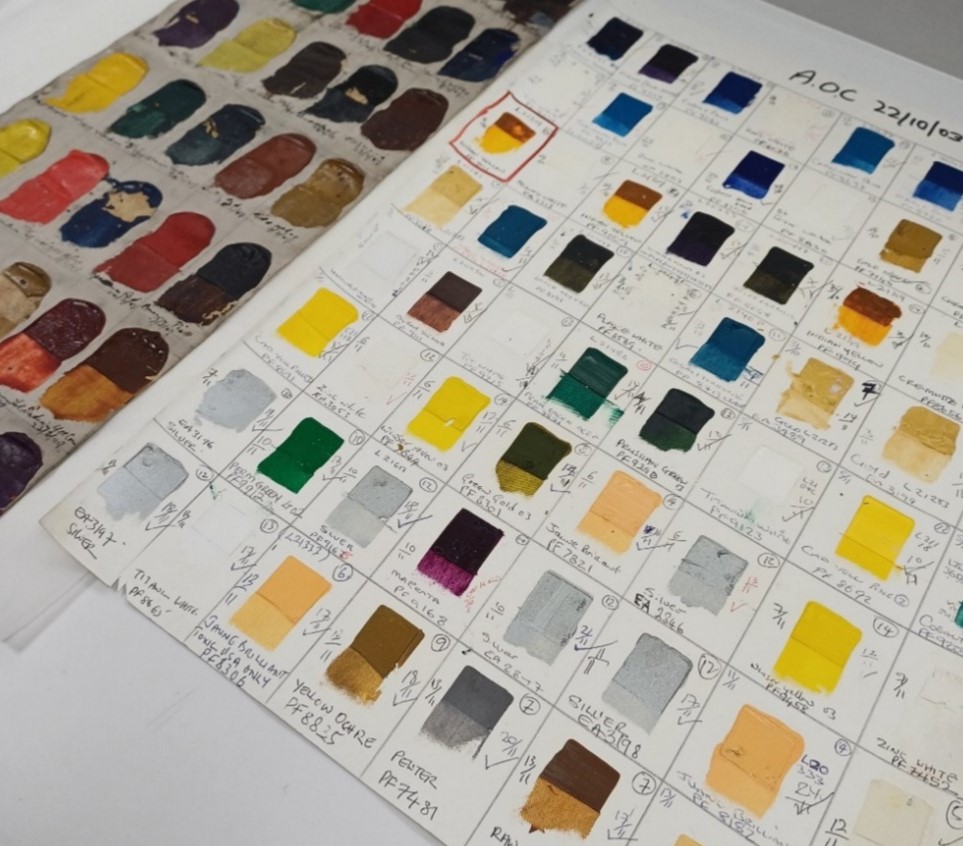
Recent investments through the Arts and Humanities Research Council’s Capability for Collections (CapCo) Fund, and the RICHeS programme have significantly expanded Tate’s in-house scientific research capabilities. New tools and techniques now in use include:
- A digital microscope for high-resolution cleaning and surface studies
- Spectroscopy instruments for in-depth molecular analysis
- A portable analysis suite for in-situ conservation work at partner institutions
- A new RICHeS-funded Gas Chromatography–Mass Spectrometry (GC-MS) system for analysing volatile organic compounds from modern and contemporary art materials, artworks, and storage
- A cutting-edge infrared imaging system for non-invasive chemical imaging and material mapping to augment their cleaning research assessment methodology
These upgrades combined with the two RICHeS scientist roles will increase Tate’s laboratory capacity by over 40%, supporting both mobile and fixed analytical work and will greatly enhance institutional and public access to its scientific expertise.

Pioneering Sustainable Conservation: Green Art in Action
One of the highlights of the visit was a demonstration of innovative cleaning gels being developed as part of the GREENART Project, which is advancing more sustainable and safe conservation practices.
The Tate team showcased the conservation treatment of Bridget Riley’s Hesitate (1964), a striking work on hardboard that was recently cleaned using specialised biodegradable and reusable hydrogels.These gels were formulated to draw out accumulated grime, pollutants, and accretions from delicate surfaces without damaging the paint layers. Following nine months of rigorous testing on paint samples at the Tate, these new gels are proving highly effective and adaptable across different artworks. The same type of gels were also applied to Andy Warhol’s Marilyn Diptych painting, requiring slightly different considerations as Riley’s work is on hardboard and Warhol’s is on canvas.
This method not only reduces the inherent risks to artworks and the need for hazardous solvents but also opens up commercial and institutional applications for safer, greener conservation; a clear example of how RICHeS investment is supporting innovation with broad impact.
Building a future-ready archive
The CHSA project is equally forward-looking, ensuring that conservation and heritage science data, ranging from imaging, paint samples to materials analysis, is preserved, structured and made discoverable and ultimately accessible for future research. By bringing together decades of scientific work into an integrated archive, this project will enable Tate to better serve their own research strategy, as well as researchers, curators, and partner institutions worldwide.
The RICHeS visit to Tate Britain was a compelling glimpse into how targeted investment and interdisciplinary collaboration are advancing the frontiers of heritage science. The team look forward to observing Tate and its partners as they drive forward sustainable, accessible, and innovative conservation practice across the UK.
Dr Bronwyn Ormsby shares:
“We are absolutely delighted to be recipients of two RICHeS awards and continue to make extensive use of our CapCo investments. Together these enable us to address a far more diverse range of research and practice questions about the changing material nature of Tate’s collection, as well as key sector aims around sustainability and preservation. We are better able to contribute interesting stories about our collection and are improving the ways we share our research resources and knowledge gained from decades of investigation. It is exciting to see stronger ties and collaborations building within the UK heritage science sector through RICHeS and I very look forward to our collective work and discoveries“
Louise Lawson shares:
“The ability to establish a conservation and heritage science archive has been a longstanding aspiration. We are delighted that through RICHeS we can start to develop and implement the infrastructure, workflows and processes that will bring this aspiration to life. By uniting decades of scientific insight into a living archive, we don’t just preserve the past—we empower the future of conservation and heritage science research”

